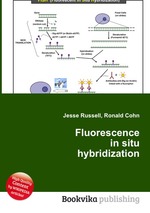Fluorescence in situ hybridization
Jesse Russell Ronald Cohn
бумажная книга
High Quality Content by WIKIPEDIA articles! FISH (fluorescence in situ hybridization) is a cytogenetic technique developed by biomedical researchers in the early 1980s that is used to detect and localize the presence or absence of specific DNA sequences on chromosomes. FISH uses fluorescent probes that bind to only those parts of the chromosome with which they show a high degree of sequence complementarity. Fluorescence microscopy can be used to find out where the fluorescent probe is bound to the chromosomes. FISH is often used for finding specific features in DNA for use in genetic counseling, medicine, and species identification. FISH can also be used to detect and localize specific RNA targets (mRNA, lncRNA and miRNA) in cells, circulating tumor cells, and tissue samples. In this context, it can help define the spatial-temporal patterns of gene expression within cells and tissues.


